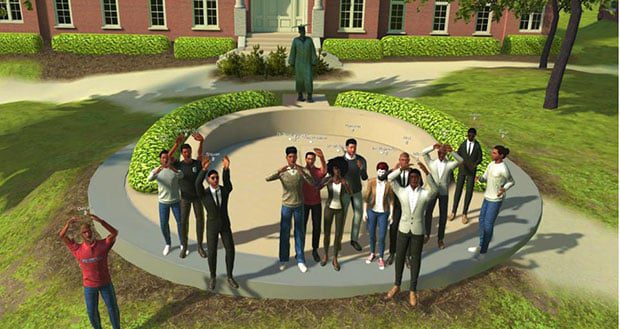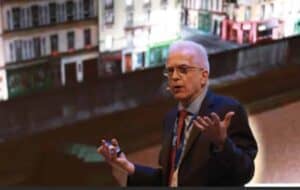I’ll be doing a keynote at 10:30 am (EDT), Tuesday, March 23rd, at the GESS Education Global Leadership Summit. The conference holds a special significance for me – not only is it organized by an amazing group of people who focus on global education issues, but it was also the last in-person keynote I did before the pandemic struck. The Coronavirus was already spreading that week in March 2020, and the UAE was proactively checking attendees’ temperatures at the entrance to the convention center in Dubai. The country went into lockdown only days after the event ended. As much as everyone was concerned, we had no idea how bad the global situation would be a few weeks later. And of course, I flew back to New York City which would become an epicenter for the pandemic, and then on to the State of Washington where the first deaths in the United States would occur (I seem to have a knack for showing up in crisis spots).
The disruption to education – and every other area of our lives – was massive. Over 1.5 billion students forced to stay home and find new ways to learn. Teachers and faculty scrambling to find online solutions for everything they once did face-to-face. And while we are beginning to flatten the curve, we all are warily watching the infection and vaccination rates – and wondering what “normal” will look like in the future.
GESS Education Keynote
Here’s the synopsis of my talk on Tuesday:
Learning in Virtual Worlds: How Augmented and Virtual Reality is Transforming Education in a Global Pandemic
Using augmented and virtual reality during a global health crisis brought profound challenges and creative opportunities. While students and educators faced significant technology barriers, there were groundbreaking developments in new hardware, apps, and virtual environments for education, collaborative workspaces, and social interaction. The challenges raise many questions: how do we address the stark inequalities of the digital era? How do we protect the virtual spaces of our schools and universities? How do we design compelling virtual learning experiences? But these innovative projects are also roadmaps for our future, revealing new ways to foster scientific literacy, learning in the humanities and creative arts. As UNESCO reminds us, we cannot return to the world as it was before. Let’s explore how AR and VR will transform how we live, learn, and work in the future.
As a reader of Digital Bodies, you know it’s been a fascinating year for augmented and virtual reality. Indeed, with the need to learn and work remotely, it should have been XR’s moment. But we faced – and continue to face – profound challenges in access to bandwidth and hardware, especially from a global perspective (you can start with the 940 million people – 13% of the world’s population – who lack even basic access to electricity).
However, XR has continued to progress rapidly and we’ve seen incredible developments from the rapid expansion of social and collaborative VR platforms to innovative projects such as ASU’s partnership with Dreamscape Immersive and the Morehouse College VR classes (to name just two of the many developments).

My ultimate question in the GESS Education keynote: will the global pandemic launch us in the Metaverse? We won’t get there this year, but we’re much closer to living in virtual worlds than we were a year ago. There are fundamental challenges ahead, especially with the digital divide, the use of avatars (it’s more complicated than you think), and the growing convergence of XR and AI – which raises fascinating opportunities and profound issues for how we will live, work and learn in the future.
Join me if you can – it will great to be back in Dubai tomorrow if only virtually for now!
Emory Craig is a writer, speaker, and consultant specializing in virtual reality (VR) and generative AI. With a rich background in art, new media, and higher education, he is a sought-after speaker at international conferences. Emory shares unique insights on innovation and collaborates with universities, nonprofits, businesses, and international organizations to develop transformative initiatives in XR, GenAI, and digital ethics. Passionate about harnessing the potential of cutting-edge technologies, he explores the ethical ramifications of blending the real with the virtual, sparking meaningful conversations about the future of human experience in an increasingly interconnected world.

